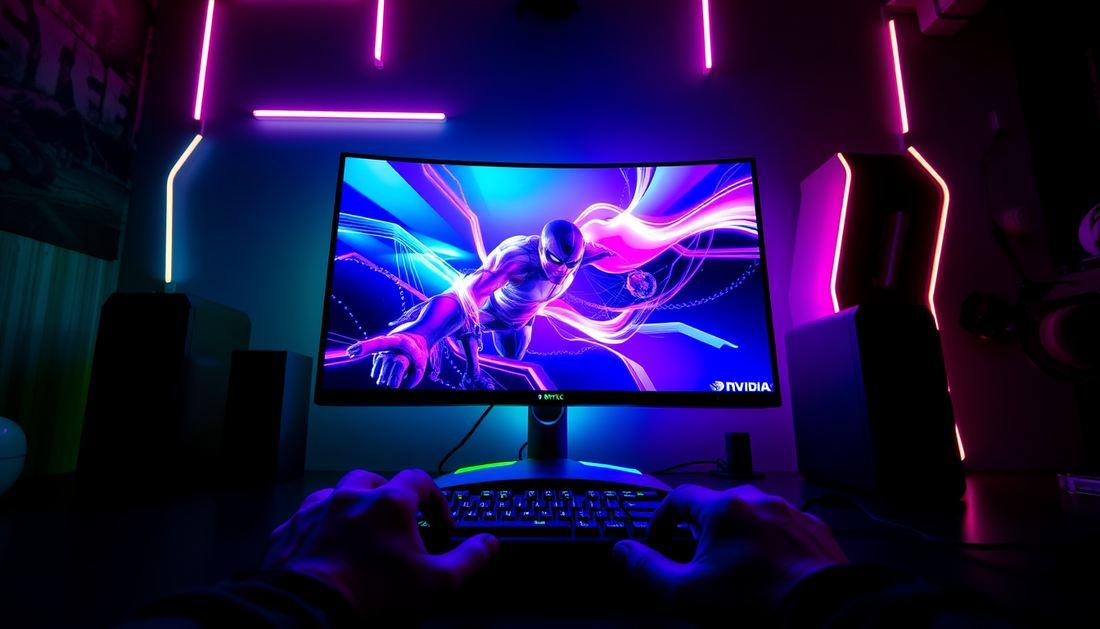
The Rise of Nvidia G-Sync: Revolutionizing the Gaming Experience
ShopgalaxyIn the ever-evolving world of gaming technology, one innovation has stood out as a game-changer: Nvidia's G-Sync. As the gaming industry continues to push the boundaries of visual fidelity and immersive experiences, the need for seamless, tear-free performance has become increasingly crucial. Nvidia's G-Sync technology has emerged as the solution, offering gamers a level of visual quality and responsiveness that was once unimaginable.
The Challenges of Traditional Vertical Sync
Before the advent of G-Sync, gamers were often plagued by the issues of screen tearing and input lag. Screen tearing occurs when the graphics card and display are out of sync, resulting in a visible seam or "tear" across the screen. This jarring visual artifact can be particularly disruptive during fast-paced action sequences or rapid camera movements.
Input lag, on the other hand, is the delay between a player's input and the corresponding on-screen response. This latency can be the difference between victory and defeat in competitive gaming, where split-second reactions are paramount.
Traditional vertical sync (V-Sync) was the go-to solution for addressing these problems, but it came with its own set of drawbacks. While V-Sync effectively eliminated screen tearing, it often introduced input lag and frame rate stuttering, compromising the overall gaming experience.
The Birth of G-Sync
Nvidia recognized the need for a more comprehensive solution that would address the shortcomings of traditional V-Sync. In 2013, the company introduced G-Sync, a revolutionary display technology that promised to revolutionize the gaming landscape.
G-Sync works by dynamically synchronizing the display's refresh rate with the graphics card's frame rate, effectively eliminating screen tearing and minimizing input lag. This synchronization is achieved through a dedicated G-Sync module built into compatible displays, which communicates directly with Nvidia's graphics cards to ensure a seamless, tear-free experience.
The Benefits of G-Sync
The impact of G-Sync on the gaming experience has been profound. By eliminating screen tearing and reducing input lag, G-Sync has transformed the way gamers interact with their games. Here are some of the key benefits of this groundbreaking technology:
Smooth, Tear-Free Visuals
G-Sync's dynamic refresh rate synchronization ensures that every frame is displayed in its entirety, without any visible tearing or artifacts. This results in a remarkably smooth and immersive gaming experience, even during the most intense action sequences.
Reduced Input Lag
By minimizing the delay between a player's input and the corresponding on-screen response, G-Sync has significantly improved the responsiveness of gaming controls. This enhanced responsiveness is particularly beneficial in fast-paced, competitive games where every millisecond counts.
Consistent Frame Rates
G-Sync's ability to adapt the display's refresh rate to the graphics card's frame rate helps maintain a consistent, stutter-free frame rate. This consistency is crucial for maintaining a fluid and enjoyable gaming experience, especially in games with variable frame rates.
Compatibility and Versatility
G-Sync is compatible with a wide range of Nvidia graphics cards, from the entry-level GTX 650 Ti to the high-end RTX 3090. This broad compatibility ensures that gamers of all budgets and system configurations can benefit from the technology.
The Adoption and Impact of G-Sync
Since its introduction, G-Sync has gained widespread adoption among both gamers and display manufacturers. Nvidia has worked closely with leading display brands to integrate the G-Sync module into a growing number of gaming monitors and TVs, providing gamers with a wide range of options to choose from.
The impact of G-Sync on the gaming industry has been significant. Many game developers have optimized their titles to take full advantage of the technology, ensuring that players can enjoy the most immersive and responsive gaming experiences possible.
Furthermore, the success of G-Sync has pushed the industry to continuously innovate and improve display technologies. The competition between G-Sync and AMD's FreeSync has driven both companies to push the boundaries of what's possible, ultimately benefiting the end-user with ever-advancing display solutions.
The Future of G-Sync
As the gaming industry continues to evolve, Nvidia's G-Sync technology is poised to play an increasingly crucial role in shaping the future of gaming experiences. With the ongoing advancements in graphics processing power, display resolutions, and refresh rates, the demand for seamless, tear-free performance will only continue to grow.
Nvidia has already taken steps to future-proof G-Sync, introducing new features and capabilities to keep pace with the industry's rapid progress. The introduction of G-Sync Ultimate, for example, has raised the bar for high-end gaming displays, offering support for HDR, higher refresh rates, and even lower input lag.
As the gaming landscape continues to evolve, it's clear that Nvidia's G-Sync will remain at the forefront of display technology, ensuring that gamers can enjoy the most immersive and responsive experiences possible.




